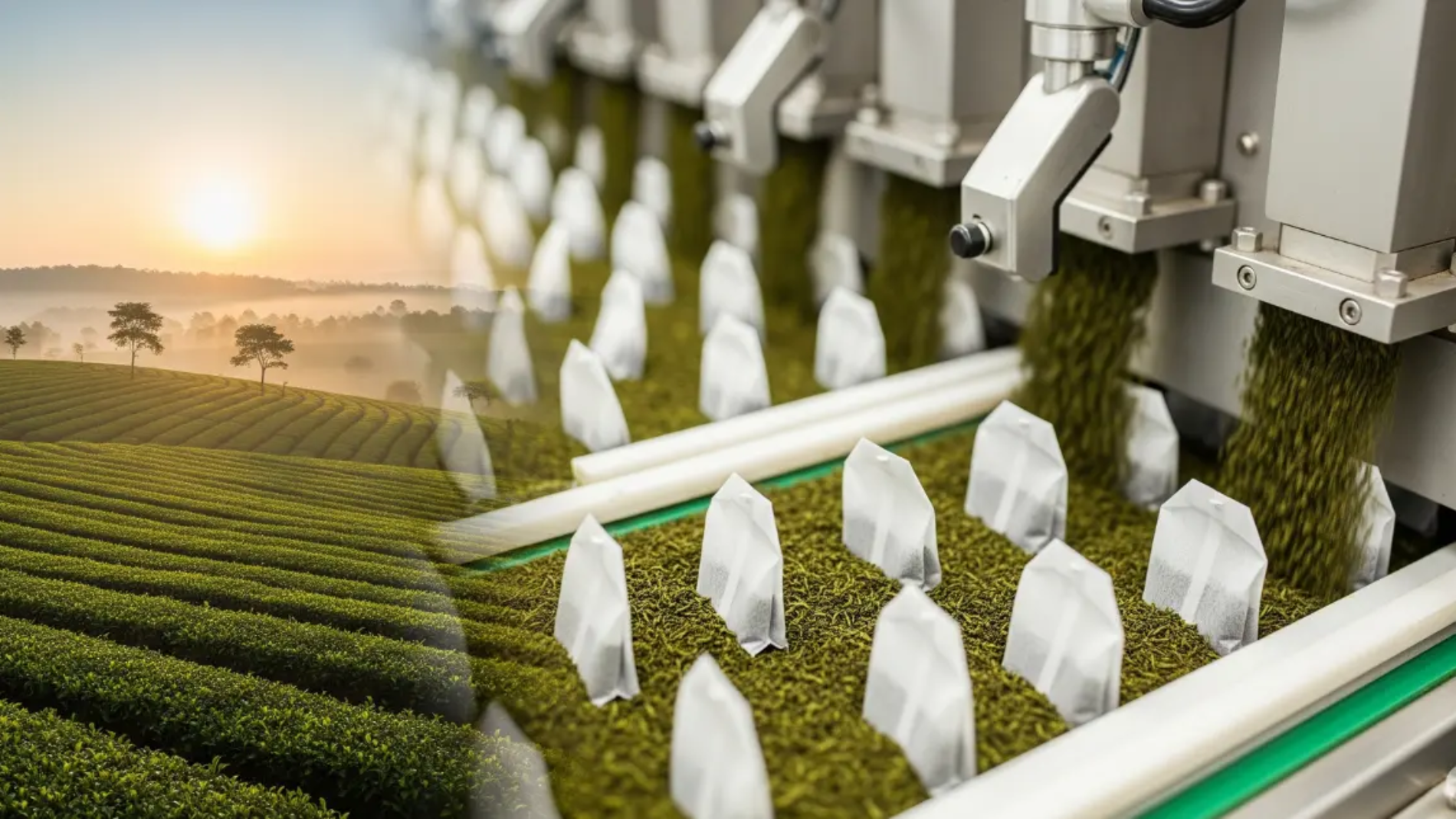For a global beverage brand, the ultimate promise to a consumer is consistency. A cup of their signature English Breakfast tea must taste the exact same in a London café as it does in a New York boardroom or a Tokyo hotel. This incredible feat of product standardization, repeated millions of times a day, is built upon a foundational ingredient that delivers reliability above all else: Assam tea.
While the world of tea is filled with delicate and exotic varieties, it is the robust, dependable character of Assam black tea that makes it the indispensable workhorse of the global beverage industry. Manufacturers of all sizes, from boutique blenders to multinational corporations, rely on this powerful Indian tea to deliver a predictable and satisfying experience in every batch. But what makes Assam tea the bedrock of this industry? The answer lies in a unique combination of its inherent flavour, innovative processing, and a highly organized production ecosystem.
The Foundation of Flavor: A Dependable, Bold Profile
The first reason for Assam tea’s dominance is its unmistakable and consistent flavour profile. Grown in the lush Brahmaputra River valley, Assam tea is famous for its full-bodied, robust, and malty character.
This strong, brisk flavour provides a perfect, solid base for a wide variety of products. It stands up exceptionally well to the addition of milk and sugar, a critical factor for mass-market tea bags and food service applications. For master blenders creating iconic mixes like Irish or English Breakfast, Assam tea provides a reliable canvas upon which other, more delicate teas can be layered. Brands know that when they source quality Assam, they are getting a predictable and potent flavour that will not get lost in the final product.
The Power of CTC Processing for Unmatched Uniformity
Perhaps the most significant factor for industrial use is the prevalence of CTC (Crush, Tear, Curl) processing in Assam. This is a highly mechanized method of production where tea leaves are passed through a series of cylindrical rollers that crush, tear, and curl them into small, hard pellets.
While orthodox processing creates beautiful whole-leaf teas, CTC is the engine of consistency for the beverage industry.
Uniformity: The automated process ensures that the particle size, density, and chemical composition of the tea granules are remarkably uniform from one batch to the next.
Quick Infusion: The small, dense pellets have a large surface area, allowing them to infuse very quickly, releasing a strong, dark liquor and robust flavour. This is ideal for the fast-brewing requirements of tea bags.
Efficiency: CTC Assam tea production is a highly efficient, large-volume process, ensuring a steady and scalable supply chain.
Spice Up Your Business with Authentic Indian Flavors
Import and Export Excellence from India!

A Robust and Scalable Production Ecosystem
Consistency requires scale. The Assam region is home to one of the most organized and large-scale tea production ecosystems in the world. Hundreds of large tea estates, many with over a century of experience, operate with standardized agricultural and manufacturing practices.
This vast and established network ensures a reliable and massive supply of bulk Assam tea that can meet the colossal demands of multinational corporations. A global brand cannot build its flagship product on an ingredient with an unstable supply. The sheer scale of Assam’s production provides the supply chain security that the beverage industry absolutely requires.
Standardized Grading for Precise Blending
To ensure perfect replication, blenders need to work with precise specifications. The Assam tea industry utilizes a clear and effective grading system for its CTC teas, designating them by the size of the granule.
Grades like BOP (Broken Orange Pekoe), BP (Broken Pekoe), OF (Orange Fannings), and PD (Pekoe Dust) allow a buyer to order the exact type of tea they need for their blend. A brand’s master blender can create a recipe—for example, 60% BP and 40% OF—and Assam tea suppliers can provide those exact grades year after year. This removes the guesswork from blending and is fundamental to achieving a consistent final product.
In conclusion, the reliance on Assam tea is a strategic business decision. Its predictable malty flavour, the batch-to-batch uniformity from CTC processing, the security of its massive production scale, and its precise grading system make it the most reliable and consistent black tea in the world. For an industry built on a promise of sameness, Assam tea is the ingredient that allows them to keep it.
Frequently Asked Questions (FAQs)
1. What does CTC stand for and why is it important for tea bags? CTC stands for Crush, Tear, Curl. It’s a production method that creates small, dense tea granules. This is ideal for tea bags because the granules infuse very quickly, releasing strong colour and flavour in the short time a tea bag is typically steeped.
2. What is the flavour profile of a typical Assam tea? Assam tea is known for its strong, bold, and full-bodied flavour. The most prominent taste note is a distinct maltiness, often accompanied by a brisk and astringent finish.
3. What’s the difference between first flush and second flush Assam tea? First flush (harvested in spring) is lighter and more floral. Second flush (harvested in early summer) is the prized crop, producing the classic, rich, malty, and tippy teas that Assam is famous for. Most bulk Assam tea for blending is from the second flush.
4. How do major brands keep their breakfast blends tasting the same every year? They use a precise recipe of different tea grades from various estates. Master blenders taste new harvests and skillfully blend them to match a pre-defined flavour profile, with CTC Assam tea often forming the consistent base of the blend.
5. Are Orthodox Assam teas also used in the beverage industry? Yes, but less commonly for mass-market products. Orthodox (whole-leaf) Assam teas are prized for their nuanced, complex flavours and are typically sold as premium loose-leaf teas rather than being used in tea bags.
6. What are the main CTC Assam tea grades used by large brands? The primary grades are Broken Pekoe (BP) for a balanced cup, Orange Fannings (OF) for quicker colour and strength, and Pekoe Dust (PD), the finest grade, for maximum infusion speed and a very strong brew.
7. Does the consistency of Assam tea mean it’s lower quality? Not at all. Consistency in this context refers to uniformity and reliability, which are signs of a well-managed and professional production process. High-quality CTC Assam tea is flavourful, bright, and highly sought after.
8. How do I find reliable Assam tea suppliers in India? Look for established tea exporters with a long history, strong relationships with tea estates, and proper certifications (like ISO, HACCP, and Tea Board of India registration). They should be able to provide detailed specifications and samples for each grade.



Leave A Comment